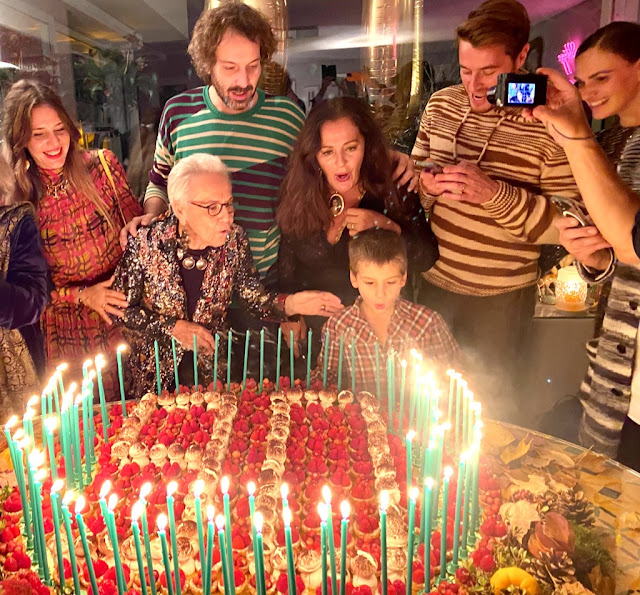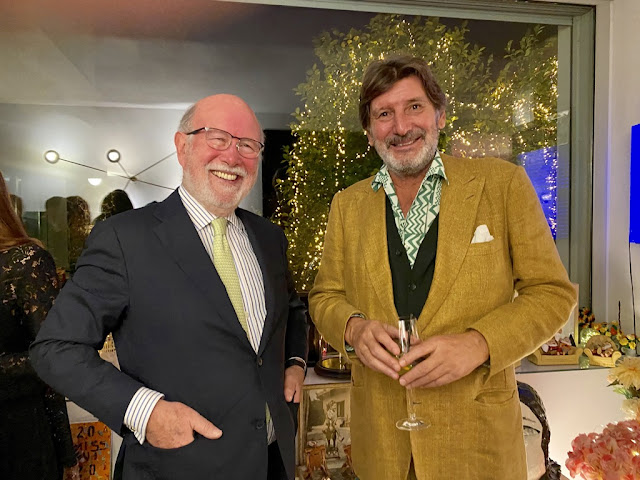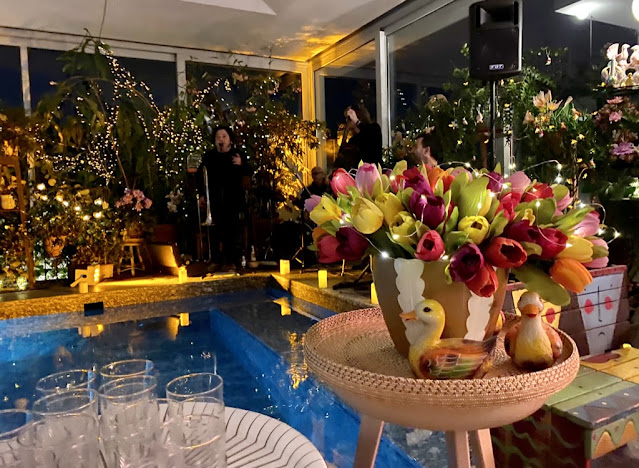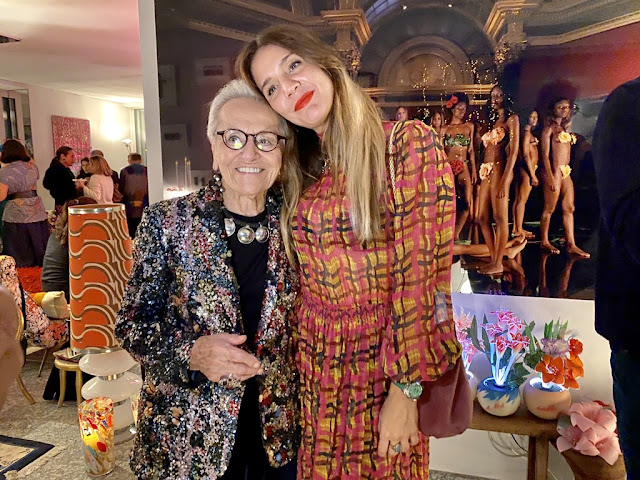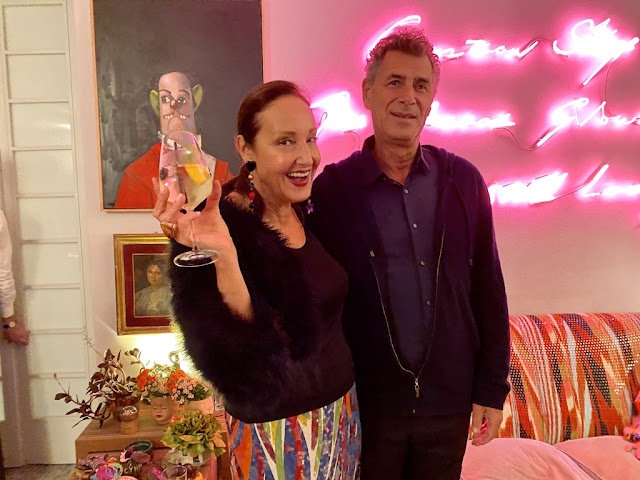There are three works by Franko B in the exhibition, two of which are series. Unloved - 2018 - is a resin sculpture of the body of a boy who died on the beach following a wreck of a boat full of immigrants. The drawings on canvas of the series Stitched Drawings - 2018 - made with woolen yarn, depict men, women, and children who live on the street, showing us only fragments of their bodies, while the other series - Valigie - 2018-2019 - is a collection of luggage and bags that are worn with age yet still alive with hope. The imagery of Franko B reveals a brutal reality lacerated by pain and illness, but despite that everything still needs to express itself, to love and be loved. It is the expression of a world that is represented through everyday objects, which in his works take on a precarious and neurotic valence.

Mark Quinn has two standing statues - Thomas Beatie - 2008 - and - The Beauty of Healing - 2014 - made of concrete, a male and a female whose appearance has been altered. The woman has geometric tribal scarifications on her body, while the man cradles his own pregnant belly. The mutation of human identity in its imaginable forms, some unreal and others impossible, allows the artist to change the narrative of classical statuary: it is a way to visualize new possible worlds in which women with scars and men giving birth represent the new Venuses and the new emperors, to be remembered in future millennia as a symbol of a society, our society, full of possible realities that change the scenarios in the lives of human beings.

Charles LeDray's installations are mostly composed of everyday clothing that he sews himself, or handmade replicas of objects trouves as his intent is to create a narrative as new as it is familiar. His works provide a concrete imagery pervaded, however, by a disquieting feeling, for they are also the expression of consumerism of contemporary culture, of a human being caged in his own world. The artist works in a miniaturized realty wherein the human body becomes the pretext to manifest a disturbance. Men's Suits - 2006-2009, in fact, is an installation composed of three illuminated racks of clothing, as if in a shop, with the only difference being that the proportions are drastically reduced. Clothes, hangers, tables, and shelves in miniature format that expose the existential condition with a ration that is no longer 1:1, making the viewer feel like Gulliver discovering his own world. The experience the American artist recreates puts the human spirit in crisis, which finds itself faced with a reality of its own creation, but which at the same time is too narrow, suffocating it and erasing its sense of belonging.
Denizens of Brussels - 2015 is one of Andres Serrano's latest photographic series, showing women, children, dogs and many other social categories who live homeless in the Belgian capital. The representation of these individuals - who laugh, hug, kiss, sleep, play, and despair - is narrated through the saturated color of the clothes they wear and the cardboard shelters they build for themselves. The artist capture the subjects' individuality, which makes them in a certain way familiar to the observer, makes them human rather than the rejects of a society that marginalizes them in their crumbling homes made of paper and imagination.
The sculptor John DeAndrea depicts mostly women whose beauty he fixes forever, like a three-dimensional photograph, perfect and delicate. With classical poses taken from the History of Art, his subjects are naked and cold in their temporal immobility, masks without a soul betrayed by their perfect epidermis. The work on display - Kathy Hague - 1971 - is a fiberglass sculpture of a woman to which human hair has been added to make it as real as possible. Using a method developed by the Hyperrealists at the end of the '60s, his intent is to capture an expression and an emotion through the use of a language which we can call 'sculptural photorealism', capable of identifying the psychology of the subjects and conveying it to the viewer.
The American artist Janine Antoni relates her own body to objects and actions that affect our daily lives, gathering the legacy of Body Art from the 1960s. Slumber - 1993 - is a veritable dream machine that is activated through the artist's performance. The work consists of a bed on which Antoni lies, hooked up to a device that measures electromagnetic waves, whose oscillations generate more or less turbulent lines which the artist then embroiders on a loom connected to the work. The machine thus documents a bodily dream, marking the passage between the invisible and the human.
Duane Hanson is one of the founders of Hyperrealism and best known for his photorealistic sculptures. Tourists II - 1988 - is a fiberglass sculpture composed of two figures, a middle-aged and overweight couple in loud tourist garb, complete with visors, cameras, and standing and looking at something, perhaps a work of art they are waiting to understand. The mechanism that is triggered causes the viewer to become the object of the tourists gaze, and not the other way around, immobile in their ordinariness. It is the personification of the Pop object, which in his works gives us a glimpse of familiarity.
Dayanita Singh uses photography to reflect and expand the ways in which we relate to images. Her recent works are a series of mobile museums that allow the images they present to be edited, archived, and exhibited indefinitely. This work also grows out of the artist's interest in the aesthetic and narrative possibility of interrupting and re-contextualizing various sequences and re-sequences. File Museum - 2012 - brings together photographs of bureaucratic archives and the archivists who work there, in a limbo of chaos and order. Suitcase Museum - 2015 - is a collection of 44 framed book covers, each belonging to a specific journey that Singh has taken in her career, contained in two leather suitcases with wheels so that the artist can carry them with her. In Time Measures, Sequence VII - 2016 - she exhibits photographs of bundles of documents taken from Indian archives that are wrapped in dyed red fabric, like fugitive to be hidden and protected. Photography, the locus par excellence of memory, become a body within which to both shelter and show oneself.
Urs Luthi is an eclectic artist who explores the languages of the body through photographs and ambivalent representations. He works mainly on the de-peronalization of his own identity by abusing photographs and stories in which he portrays himself as something other than what he really is. On display Low Action Games II - 2001 - from the series Placebos and Surrogates, a three-dimensional realization of two of his photographs in which he holds a ball in his hand and then drops it. The sculpture, in the classic pose of Venus, immortalizes the two moments simultaneously and represents the transience of time, for which art is the only choice, enclosed in a single image.
Fabio Mauri is one of the best known Italian artists of his generation. His work has developed around the language of cinema and his fascination with the power of the television screen and the spread of ideology. The themes he has dealt with concern the historical reality in which he has lived, from wars to the culture of spectacle to the phenomena of globalization. On display are three of his works, each of which is a collection of containers. Above - China ASIA Nuova - 1996 - the wall is made of metal trunks manufactured in China. At its center is a screen on which is shown the twisted destiny of the execution of a young revolutionary involved in the events of Tiananmen Square.
